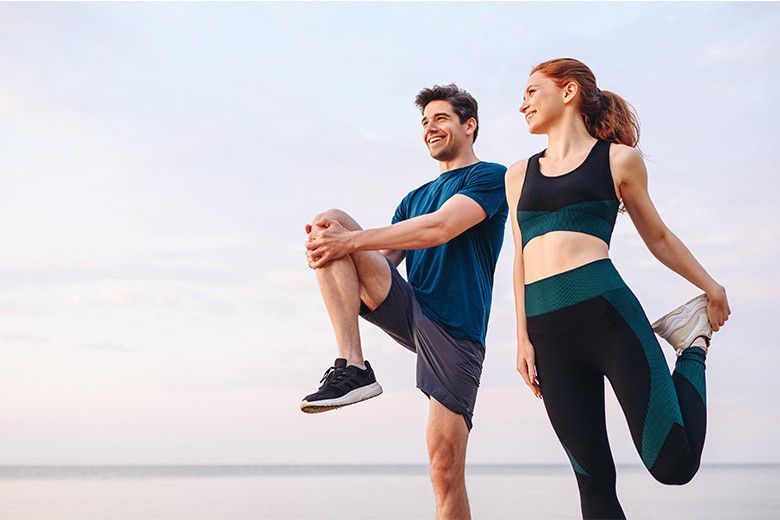Partner training: having fun and staying fit

- 1 Train together
- 2 Benefits of training in pairs
- 3 Exercises
Partner workout
Training in pairs is an alternative to a solo workout.
Not only does it allow you to compare notes and get tips from each other, but it also ensures that you can perform exercises that you would otherwise not be able to do alone.
Plus, training in pairs is more fun!
Partner work out? Why not!
Pair training consists of a series of workout sessions done with a partner. Usually, the athlete trains alone for many disciplines, performing a series of exercises aimed at a specific goal. In this type of training, on the other hand, the partner can be used as support, allowing you to perform exercises that would otherwise not be possible on your own.
The benefits the pair can gain are manifold since the whole body can be used and better developed.
Usually, this type of training is carried out as part of functional fitness, using circuit exercises. It is essential to perform the movements slowly, especially for the first time.
Trust also plays a vital role depending on the type of exercise performed: trusting your partner when the workout gets harder ensures that you will progress in your training.
However, it is good to remember that at the end of each exercise, you should massage your muscles to loosen them up properly with a suitable cream (that should include the often forgotten foot massage at the end of an intense workout). With a meal at the end of the training, you can conclude the partner workout by recovering lost energy for the following exercises.
What are the benefits of training in pairs?
Training in pairs is fun and stimulating and allows you to be more imaginative with your exercises: the range of workouts is expanded, and muscles are stimulated and toned in entirely new ways.
But that’s not all.
One’s body and that of the other are subjected to discoveries, allowing the couple to discover new horizons or better understand physical limits.
Partner training constantly forces one to adapt to the other person’s movements, thus increasing coordination and confidence.
It increases the degree of harmony and motivation to complete the exercises, making it easier to de-stress at the end of the day.
What are the most suitable exercises for couple training?
Numerous sports activities can be done as a couple, provided you have the right partner to push your limits. Among these, the best known are tennis, running, kickboxing, dancing, yoga, swimming, etc.
If you are at the gym or home and looking for new exercises for a partner workout,
here are some tips on what you can do.
-Leg lifts: in this exercise, standing on the floor or mat in a supine position is essential while your partner stands behind your head. You bring your hands back and grasp your partner’s ankles to increase stability during the exercise. Slowly raise your legs to keep your pelvis and torso firmly on the ground. Once a 90-degree angle has been formed between the upper body and the legs, the partner slowly pushes them down.
-Truck jump on the partner: One person stands in the bending position. The back should remain straight and the neck not tense, while the wrists should be the same width as the shoulders. The partner places their hands at shoulder blade level and, levering them up jumps on the right side and then on the left side of the torso. This type of exercise is perfect for increasing arm strength.
-Wheelbarrow: This is one of the most fun pair exercises.
One person lies down with their abdomen facing the floor while their partner stands behind them. The stomach is lifted by putting pressure on the arms, replicating the bending position.
At this point, the partner must lift and hold the legs by the ankles.
Then you start walking forwards on your hands while being followed by your partner supporting your lower limbs.
-Couple sit-ups with handstands:
This exercise helps strengthen the abdominals. Lie on the floor with your knees bent and your feet on the floor, then your partner lies across from you, and you interlock your feet. The chest is lifted with the arms raised, clapping hands with the partner as the movement is completed.
-Squat with suspension and lunge: Triceps and buttocks are trained with this exercise, thus stimulating the upper and lower body.
The partner stands behind the other person, about 50 cm apart, and positions himself in a squat.
The other person then places their hands on their knees, elbows on their hips in a dip position. Slowly lower your body by bending your elbows until your arms are parallel to the floor. Finally, return to the starting position.






